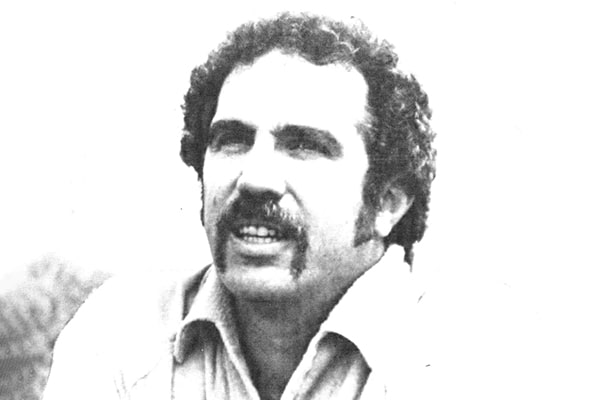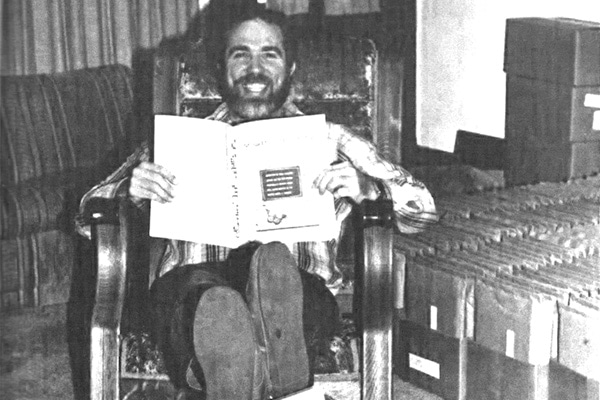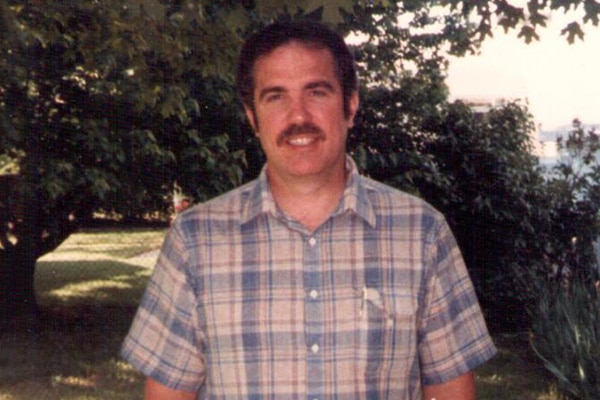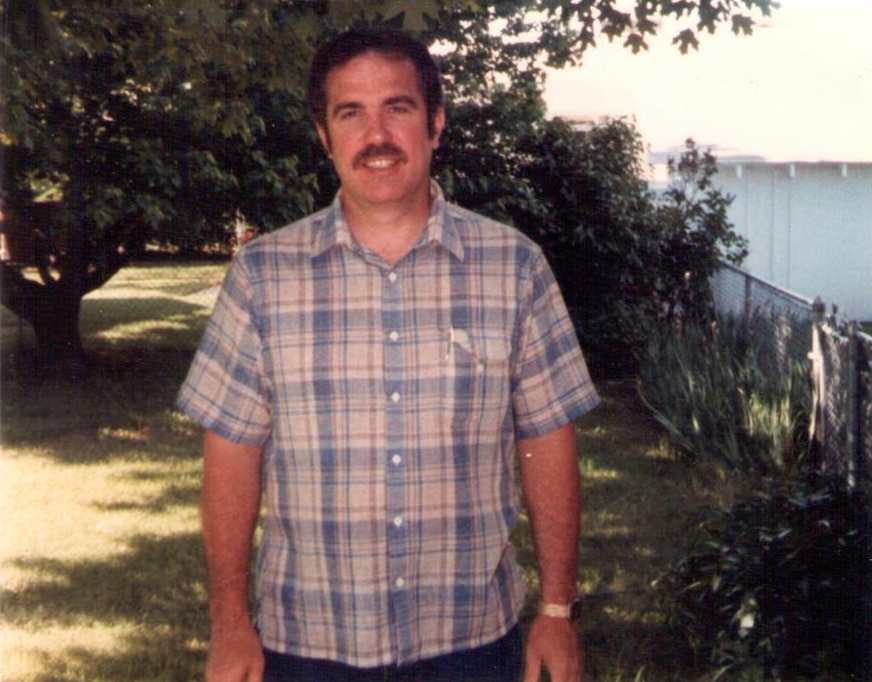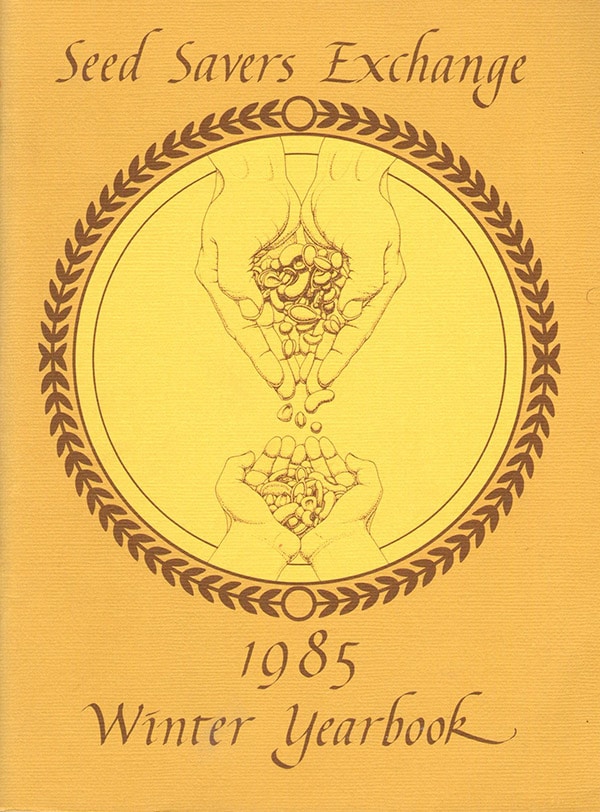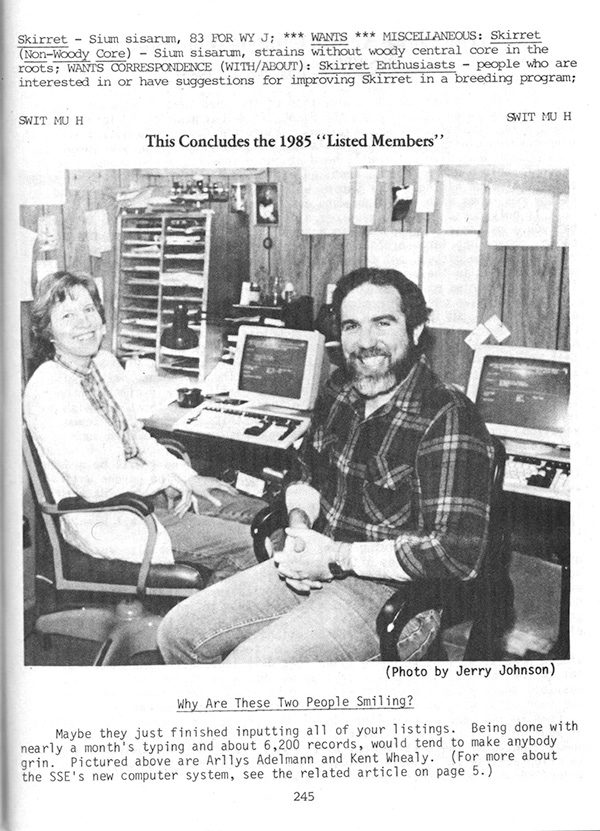Kent A. Whealy Archive
Ceres Trust is pleased to curate the Kent A. Whealy Archive, a resource of writings, speeches and photos by and about Kent Whealy (April 27, 1946–March 23, 2018), documenting his persistent and passionate work over more than three decades to secure and maintain the genetic variability of our vegetable crops, turning curiosity, vision, and hard work into the celebrated Seed Savers Exchange (SSE). Beloved by gardeners, lauded by scientists, the SSE became the country’s largest non-governmental seed bank, growing into a collection of 26,000 varieties of vegetables. Besides maintaining the collection on 23 acres of organic gardens, Kent also made the best of them available again to gardeners and greatly expanded the trade in open–pollinated seed through his inventories. In securing seeds from a rich slice of time and cultures, Kent made available an unprecedented array of exceptional varieties to gardeners and breeders alike.
An organizer, a cataloger – as he called himself – with a deep appreciation for diverse cultures, Kent was able to bring together the myriad seed savers he found around the country into a cohesive whole. Their treasured seeds, together with the seeds he secured from rapidly disappearing seed houses and the irreplaceable seeds he obtained from ancient agricultural communities in Eastern Europe and the former Soviet Union through seed collecting expeditions he sponsored, formed a major element of the agricultural flowering we enjoy today. That Kent’s labor of love bore rich fruit cannot be doubted.
As a trustee of Ceres Trust, which he joined in 2009, Kent was able to further his work in the genetic preservation of food crops and reinforce his opposition to the genetic modification of plants and the use of toxic chemicals in agriculture. Kent was a strong believer in the idea that any one person could make a meaningful change in the world and he felt it his responsibility to do so. His dedication, vision, and exemplary leadership were an inspiration to countless people. The exceptional effort made by this exceptional man is documented here.

Writing by Kent Whealy
I was finally going to meet John Withee. We were both in Tucson to speak at the Seed Banks Serving People workshop. I’d had a display case built so John could display his collection at the workshop. I was going to send it to him to fill in Massachusetts, but time had gotten too short and he had brought samples of about 800 different heirloom beans to Tucson. It was the day before the Conference and Aaron and I were taking the display case to his motel to help him fill it.
Read MoreI recently had the pleasure of being part of a unique workshop that was held in Tucson on October 13 and 14. I would be surprised if there is ever another that even closely resembles it. I came away riding a warm wave of friendship and enthusiasm like I have never felt before. It was so incredible that I was even a little down just because it was over.
Read MoreI first estimated that this “Fall Harvest Edition” would reach you during October. I figured it would be nice to receive it about the time when many of you were harvesting and working with your seeds. But I decided that I wanted to write most of it after I had attended the Seed Banks Serving People Workshop which was held in Tucson in mid-October. Many of the people that you have read about in the Seed Savers Exchange were speaking at the Workshop and I wanted to bring you their words so that we could all learn from them.
Read MoreTo get right to the point, the Vegetable Variety Inventory is only about one quarter complete. I still need almost 60 16-hour days to complete it and it is unrealistic to think that I will have time to get it done before Christmas, I have spread myself too thin. I always think that I can just knock things out in no time at all, but I’ve never taken on anything this big before. I really had no idea what a massive task it would be.
Read MoreThere is a world-wide crisis that few people know about, but that may very well determine how hungry the world is in the future. The scientific community and laymen around the world are voicing increasing alarm about the genetic wipe-out of our food crops and their ancestors. Two specific areas of this crisis which have received almost no consideration are the extinction of both “heirloom” vegetable varieties and also the vegetable varieties currently being dropped from seed catalogs.
Read More“I’m Kent Whealy and I direct an organization of vegetable gardeners known as the Seed Savers Exchange that maintains and also exchanges heirloom vegetable varieties. I’ll be telling you more about the organization tomorrow, but what I really want to talk to you about today is some work that I have become very interested in recently.”
Read MoreThe Garden Seed Inventory represents your heritage as a vegetable gardener. The diversity and quality and number of garden varieties now being offered commercially is almost beyond belief. Gardeners in the United States and Canada are truly blessed. But it is quite possible that half of everything listed in this book could be extinct within the next few years! The major forces threatening this diversity include: plant patenting legislation; takeovers of seed companies by multinational corporations; plant breeding for machines instead of gardeners; the profit-motivated hybrid bias of most seed companies; and increasing bankruptcies of small businesses.
Read MoreThe fifth Annual Campout Convention of the Seed Savers Exchange was held on July 20-21, 1985 at the Pine Bluff 4-H Camp. The Camp is located six miles northeast of Decorah, Iowa and includes 115 acres of pine-covered bluffs, beautiful trails and a suspension bridge over the Upper Iowa River. This year attendance almost tripled because many of our members wanted a chance to look at the five-acre Preservation Garden containing 2,000 rare varieties which was just over the back fence. The magic of the Campout is that it brings together a diverse group of people who share the common bond of working to preserve our seed heritage. This year’s gathering was so high-powered that it’s going to be really hard to top it next year.
Read MoreMy name is Kent Whealy and I’m the director of a non-profit organization of vegetable gardeners known as the Seed Savers Exchange. The Seed Savers Exchange is actually a preservation project which is trying to save what remains of our vanishing vegetable heritage. The majority of the vegetable varieties currently available to gardeners may be lost within a few short years unless drastic action is taken. We are actually working with two groups of seeds: heirloom varieties, which are seeds that are passed down from generation to generation within certain families; and also with commercial varieties, which are currently being dropped from seed catalogs. I would like to spend my time with you today telling you about how the Seed Savers Exchange got started, what we are trying to accomplish, what heirloom varieties are, the problems we all face relating to the loss of genetic diversity, and how we as backyard gardeners can help to turn the situation around.
Read MoreFrom 1985 Harvest Edition, Seed Savers Exchange · What in the world would ever cause two men and a boy to try to grow out over 2,000 varieties of garden plants on five acres? The main reasons were two seed collections totaling nearly 5,000 varieties, and the result was that most fantastic display of heirloom vegetable varieties that anyone has ever seen. We learned a tremendous amount from that garden this last summer. And we also used it to create more interest about heirloom varieties — through national publicity and locally with garden tours — than anything else we could have possibly done.
Read MoreThis speech was given at the 1985 Seed Conference held on October 4-6 at the Missouri Botanical Garden in St Louis, Missouri. It was co-sponsored by the National Gardening Association ( formerly “Gardens for All” ) and the Missouri Botanical Garden. Funding for the Conference was provided by the Wallace Genetic Foundation, a branch of Pioneer Hi-Bred. The conference brought together the owners and directors of small alternative seed companies and preservation projects with representatives from the major seed companies.
Read More“I’d just like to thank all of our members for the tremendous amount of work that each of you puts into this inspirational project. Whether you realize it or not, this has turned into the largest search for endangered and unique plant material in the history of the United States. We are being praised from all quarters as an exemplary organization that other groups and projects are trying to emulate. We have every reason to be quite proud of our efforts.”
Read MoreMy name is Kent Whealy and I am the Director of a grass-roots network of backyard vegetable gardeners known as the Seed Savers Exchange. I have been working for the last 12 years to build this network of gardeners who are either keeping or interested in the preservation of older food crops. I appreciate the fact that you have invited me to speak to the National Plant Genetic Resources Board. I stand before you today with a great amount of respect, realizing full well that many of you have spent your entire professional careers working with and promoting genetic preservation.
Read MoreFrom SSE 1986 Harvest Edition. No wonder people question whether there is hope for the world. I deeply believe that there is hope, but it bothers me greatly when I see vast numbers of people giving up the struggle and becoming apathetic. That is as great a danger as any of the problems we face, because nothing is going to change without strong and deliberate action on a massive scale. I have thought long and hard about how individuals can make the greatest impact with their lives. There are a thousand good causes. But if you break your energy into a thousand pieces, you have nothing. Decide instead what one area holds the greatest interest for you, or where you feel you can do the most good with your life. And then focus all of the energy that you can muster on that one area and devote to it this short lifetime that we have been given. Become totally one-pointed, pace yourself so that you don’t burn out, and be careful not to spread yourself so thin that your efforts become ineffective. Believe me, you will be amazed at what you will accomplish.
Read MoreThe Seed Savers Exchange has just purchased its Heritage Farm! For three years we have been searching for the perfect property to showcase the organization’s preservation projects. During that time we have commuted to and gardened on rented land, and the Whealy family and SSE office has been shuffled between a succession of rental properties that has made us wonder at times if we could hold everything together. But now, thanks to a tremendous vote of confidence and generous loan from the C. S. Fund, the SSE is the proud owner of the most beautiful 57-acre farm that I have ever seen.
Read MoreIt has been almost exactly a year since the Seed Savers Exchange purchased Heritage Farm to provide a permanent location for our genetic preservation projects. I knew that it was a gamble for our small but rapidly growing organization to attempt extensive projects at this stage of its growth. But so much genetic diversity is being lost right now that we really had no other choice. Some decisions are beyond reasoning, and you just have to jump in with both feet and give it your best shot. I always think of such episodes as “leaps of faith” and we have taken several together during the last 12 years, but this was by far the largest and most dangerous. Would we succeed in making Heritage Farm a reality, or would SSE be destroyed financially in the process? During this last year the necessary pieces have been falling into place so quickly and so perfectly that it’s spooky. This has definitely been a year of transition in many ways and I want to share with you the excitement of what has transpired.
Read MoreThis grant proposal will examine the following problems and their solutions:
1. Counteracting current trends that are destroying the genetic diversity of our food crops, and how gardeners and farmers working together can rescue and maintain what remains of these irreplaceable biological resources.
2. Developing an exemplary model farm project which will act as a catalyst to quickly effect the changes that are described in this proposal.
3. Demonstrating alternative crops, and workable organic techniques that will stop gardeners and farmers from using chemical sprays and fertilizers.
For some of you, this is your first visit to Heritage Farm. We want to welcome you and hope that you to feel at home while you’re here. Indeed, Heritage Farm is owned by the Seed Savers Exchange, and our members paid off Heritage Farm’s mortgages in only five years, so we really want you to feel like this is your home, too. While you’re here, I hope that each of you has time to wander through all of this summer’s gardens – which have never been more beautiful or more extensive – and keep in mind that all of Heritage Farm’s genetic preservation projects are supported by your membership fees, donations and purchases from Seed Savers catalogs of Heirloom Seeds and Gifts.
Read MoreSeveral years ago I met Wendell Berry for the first time when he spoke at Luther College. He mentioned being impressed by the energetic, fast pace of the folks around here. I told him, “Heck, Wendell, they’re just cold, that’s all.” Our long winters, where this corner of Iowa borders Minnesota and Wisconsin, result in an almost frantic burst of activity during the growing season. Everyone throws themselves into their projects as soon as the weather clears in the spring. Summer flies by in a blur. Suddenly it’s Labor Day, our children are starting back to school and fall is in the air. Seed harvest at Heritage Farm will continue for another frenzied month until the first hard freeze. All too soon the snow will be flying again, giving everyone time to reflect on what was achieved during this season.
Read MoreSome of you have been to our past Campouts and were lucky enough to meet Jeff McCormack and Patty Wallens. They’re both very special people, wise and intuitive. Jeff has been on Seed Savers’ Board of Directors for several years now. Last Christmas Jeff and Patty sent my family a little book called Caretakers of Wonder. It is a wonderful children’s book that was written by Cooper Edens, who also did its beautiful illustrations. It’s even available through our local bookstore, so I imagine you could find it in bookstores across the country. The book makes a wonderful gift, especially for families with small children. Let me read you parts of it, because I know some of you will enjoy it as much as my family does.
Read MoreKent Whealy, 43, also followed an idea all the way. A gardener extraordinaire in Decorah, Iowa, Whealy’s passion is seeds – heirloom seeds, the ones that would become extinct unless someone kept them growing.
He can’t put his finger on the reasons for his devotion. But he remembers the spark: the gift of several rare seeds from his wife’s grandfather, seeds that had come from Bavaria four generations before and had been passed down.
Read MoreAs I was considering what to talk about today, I decided to speak – as Wes would say – about my passion, about what’s really driving me these days. So, if you will allow me the liberty of jumping around between various events of the last two years, I’d like to tell you how our international efforts are coming together, and then relate that to some of the new projects that we’re getting into at Seed Savers.
Read MoreUkrainian agriculture is characterized by technologically well-equipped land management and the wide availability of high-yielding cultivars of various economically important crops adapted to specific soil and climate conditions. Intensification of crop production in several regions of the Ukraine has completely ousted local varieties and landraces of food and forage crops. Large-scale plowing of cultivated areas and overgrazing of limited natural pasture land have led to the elimination of local phytocoenoses, which in turn has caused considerable losses in the diversity of plants adapted to the local environments.
Read MoreA list of the 12 plant collecting expeditions that Kent Whealy helped arrange and finance.
1993
1) Bukovina Region of northern Romania-joint 15-day collecting expedition (September 9-25, 1993) by Helga Rosso, a Romanian plant collector and technician on Gatersleben’s staff, and scientists from the Romanian gencbank in Suceava. The expedition collected in an area of the Carpathian Mountains of northern Romania on the Ukraine-Romanian border.
2) Southern Poland – three 10-day collecting expeditions to genetically rich areas in the Carpathian mountains of southern Poland. Dr. Teresa Kotlinska – plant collector and head of the Institute of Vegetable Crops in Skierniewice, Poland- completed these missions by herself during September and October of 1993.
3) Azerbaijan – Kent Whealy worked directly with Elchin Atababayev from the Institute of Plant Science in Baku, Azerbaijan. Seeds collected throughout Azerbaijan by Elchin (and his father) during the summer and fall of 1993 were delivered to Kent Whealy by Elchin during a joint trip to Gatersleben with Nancy Arrowsmith during the winter of 1994.
Read MoreThe seed collections at Heritage Farm have continued to grow rapidly in recent years, and now contain more than 18,000 total varieties. At the end of 1996, our collections included: 3,511 beans; 645 corns; 193 cucumbers; 136 eggplants; 187 garlics; 836 lettuces; 426 melons; 934 peas; 1,213 peppers; 1,016 squash; 156 sunflowers; 4,090 tomatoes; 226 watermelons; and smaller amounts of 67 other vegetable crops. At that same time, Heritage Farm’s Historic Orchard also contained 667 apples and 163 grapes. And all of these figures were before receiving two large shipments of seeds during the spring of 1997 from the Vavilov Institute in St. Petersburg, Russia, which contained samples of traditional varieties from the three collecting expeditions last summer to the Aral Sea in Kazakhstan, Russia’s Volga Valley, and the Carpathian Mountains in western Ukraine.
During a typical summer at Heritage Farm, we normally grow about 2,000 varieties for seed, usually about 10% of our major collections: 300 tomatoes; 300 beans; 125 peppers (under screen cages); etc. In 1989 we began taking documentary photographs and collecting data on most of the varieties being grown in the preservation gardens at Heritage Farm. Each photo is taken on a 1″ grid, and the content varies depending on the crop being photographed. For instance, documentary photos of tomatoes include a typical leaf, four views of the fruit (stem side, blossom side, side view, and a cut fruit showing the internal structure), and a label with the variety’s name and SSE #. Photos of peppers include a branch of leaves with an immature fruit, three views of the mature fruit (whole fruit, fruit cut lengthwise, and a cross section), plus name label. And so on.
Read MoreI want to welcome all of you to Seed Savers’ 17th annual Campout Convention. Each summer, on this next-to-last full weekend in July, our members gather at Heritage Farm for this special celebration, which is partly a convention and partly a reunion of old friends.
Read MoreDuring the time that I have with you today, I want to first describe everything that was involved as I put the Historic Orchard into place at Seed Savers, which today contains about 700 varieties of pre-1900 apples. Those efforts more than two decades ago have led to the major six-volume book I am currently editing which will document more than 13,000 varieties of apples mentioned in U.S. literature during the last two centuries, and which will also be illustrated with 3,500 watercolors of those apples. Then I want to briefly describe some of the foundation work I am currently involve in as a trustee of the Ceres Trust, which is mainly attempting to empower organic agriculture.
Read MoreThis is Part II of the talk that Kent Whealy, co-founder of the Seed Savers Exchange in Decorah, Iowa, gave at the 2010 Land Institute’s 32nd annual Prairie Festival in Salina, Kansas on September 26th, 2010…
And now, I would like to talk to you about what Wes (Jackson) would call the area of my current passion. How many of you have heard about the Svalbard Global Seed Vault that has been constructed above the Arctic Circle north of Norway? Raise your hands. I am vitally concerned right now because Seed Savers Members’ Seed Collection is being systematically taken away from its Members…
Read MoreWhen viewed in its entirety, this comprehensive compendium of minutely detailed varietal descriptions, meticulously recorded by expert pomologists, plus the histories of the apples’ origins and movement around the country, is mind-boggling. What a loss if Dan Bussey’s research in its entirety, encompassing the voices and expertise of two centuries of pomological authors and literature on apples, had never been published or illustrated so stunningly. What an honor to be able to help facilitate both.
Read MoreFive Stories: Whealy Heirloom Trumpet Vine; Turkey Red Wheat; Yellow Watermelon; Belle of Georgia; Great-Grandmother’s Christmas Cactus
Read More
